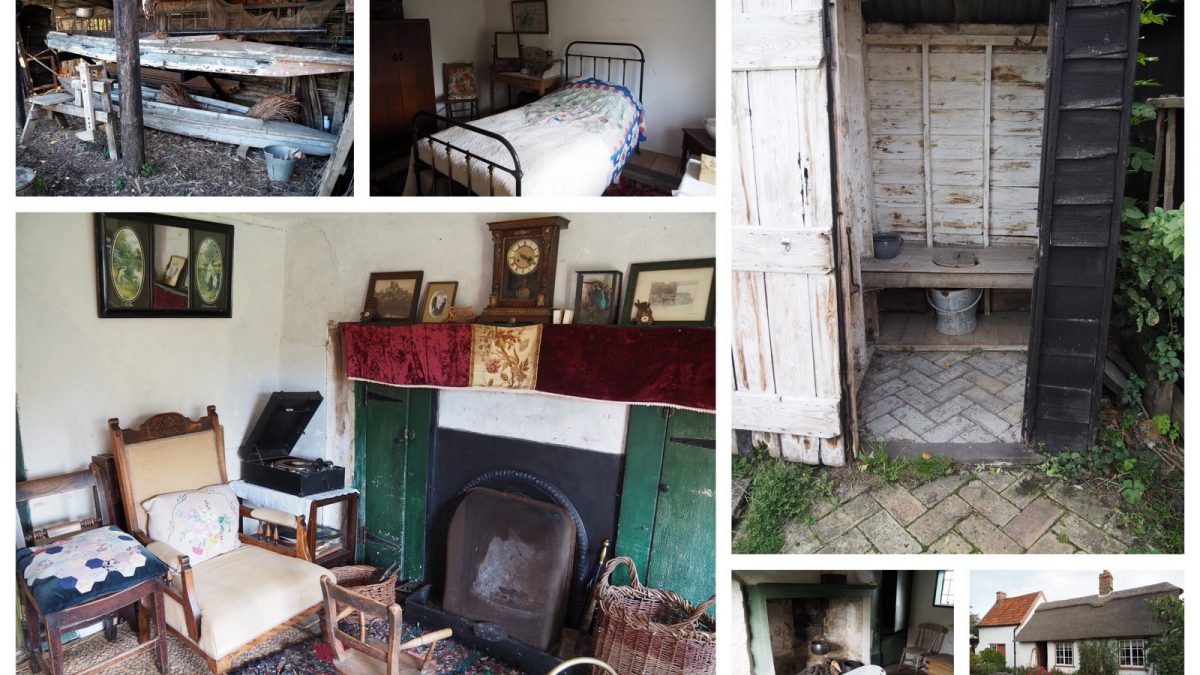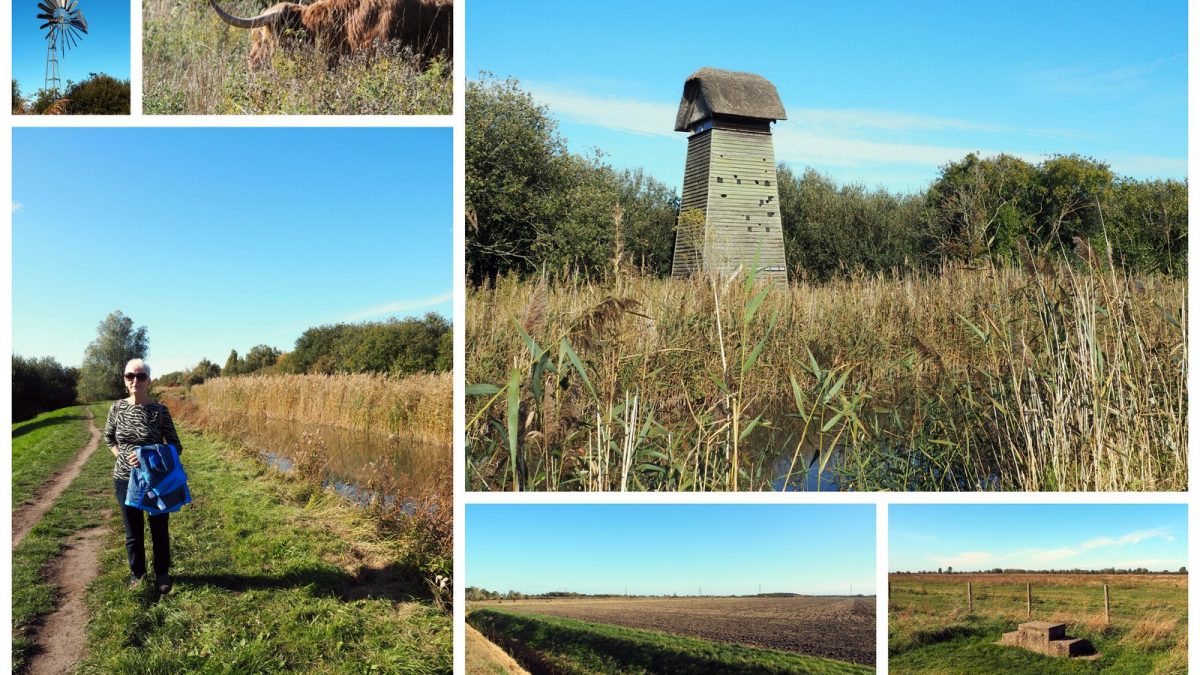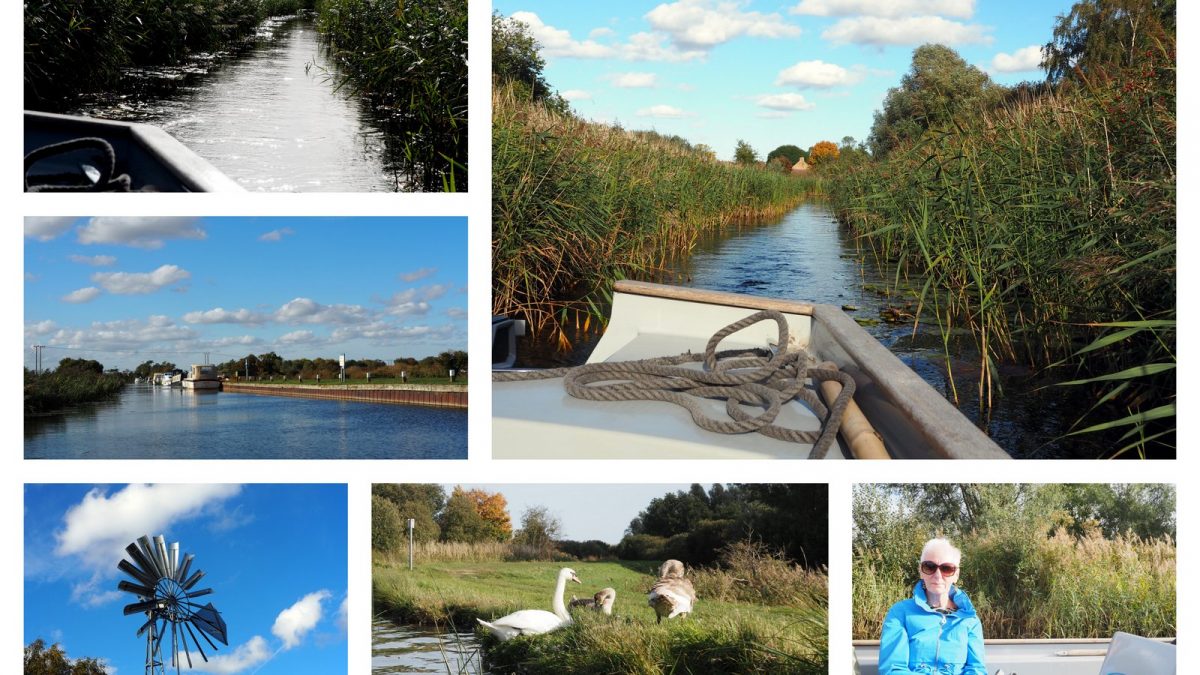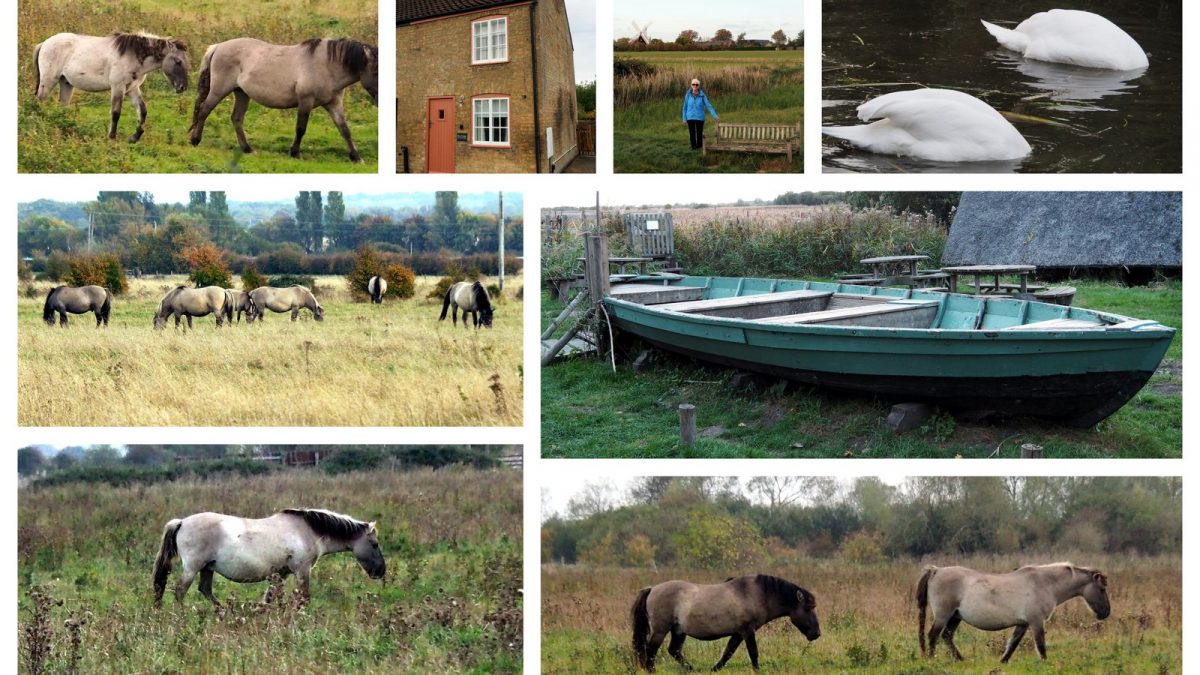Well I say magical mystery tour. It was less a tour and more an unknown destination as this latest short break away was organised by Mrs. No Name with zero input from me. All I was told was that I should pack for three nights only and it would be casual throughout. Oh, and it would only be around an hour away.
The break tuned out to be a lovely three nights in Rose Cottage at Wicken Fen (more on both later obviously). As we arrived early, we took the opportunity to walk the more ‘formal’ (man managed) section of the fen in the afternoon, which gave us a feel for the landscape and the particular sense of wetland environment that the fens provide. Amongst the delights, we found the last surviving wooden windpump in the Fens. It is a small smock wind pump, which was probably built about 1912 at Adventurers’ Fen for land drainage. The pump was moved to its present site and restored in 1956 by the National Trust. The Windpump now pumps water from the drainage channel up into the Fen to maintain a high water table. We also discovered that Wicken Fen has a special place in the history of the national trust. So……
Here comes the history lesson –
“Wicken Fen is a 254.5 hectare biological Site of Special Scientific Interest west of Wicken in Cambridgeshire. It is also a National Nature Reserve and a Nature Conservation Review site. It is protected by international designations as a Ramsar wetland site of international importance, and part of the Fenland Special Area of Conservation under the Habitats Directive.
A large part of it is owned and managed by the National Trust. It is one of Britain’s oldest nature reserves, and was the first reserve cared for by the National Trust, starting in 1899. The first parcel of land for the reserve was donated to the Trust by Charles Rothschild in 1901. The reserve includes fenland, farmland, marsh, and reedbeds. Wicken Fen is one of only four wild fens which still survive in the enormous Great Fen Basin area of East Anglia, where 99.9% of the former fens have now been replaced by arable cultivation.”
OK, history lesson over (and who knew)…we also took the opportunity to take what proved to be a ten minute stroll down into the village to check out the pub where Mrs. No Name had kindly pre-booked a meal for the first night. Suitably refreshed after a cheeky half, we went back and ‘checked in’ to Rose Cottage. We had the privilege of being the very first guests of this recently renovated cottage – bijou but beautifully done and a perfect getaway for two people. Also had the advantage of being literally a stones throw from the NT Visitor Centre with access to the wider walks of the area. Took a brief peek at the 18thC Fen Cottage, although the interior photos were taken on a different day but shown here in the blog (writer’s prerogative!) to break up the narrative. 😛
Finished the first day with a lovely meal at the village pub (The Maids Head). Had to leave a little pizza, otherwise I couldn’t have indulged in the excellent desert!!
The next day, we travelled the half hour or so to Oxburgh Hall. Again, I didn’t know where we were going until I saw the signposting close to the destination. I then announced we had definitely been before and remained steadfast until we got there and admitted we’d never visited before in our lives (memory blight again, it has to be said ). The Hall is a lovely imposing brick manor house reflected in the tranquil moat that surrounds it. Built by the Bedingfeld family in 1482 as a statement of power, Oxburgh and the family have endured turbulent times. Through religious persecution (they were said to be both fervent Catholics and devotedly loyal to the monarchy), Civil War devastation, near dereliction and threatened demolition, Oxburgh’s story is one of survival. Hopefully the photo gives some sense of its splendour. Outside, the gardens are a mixture of formal and wilderness, with the kitchen garden, orchard and herbaceous border adding colour and seasonal interest. And for those wanting to explore further, you can follow one of the estate walks through woodland, along the River Gadder, and out into open meadows. On this occasion we didn’t travel too far afield, but unusually we did take in an organised tour around the perimeter of the hall, which proved to be amusing, entertaining and very enlightening. Even now, the NT is having to re-write history (and the guidebooks presumably) as the £6 million repair and restoration project revealed an unsuspecting past – no, look it up 🙂
The next day saw us undertake some of the well marked trails around the wider Fen Reserve. In the morning we took the fairly long walk around the Adventurers Fen and spied the Highland Cattle but not the Konik ponies, conspicuous by their absence (but read on).
After the morning walk, we took refuge at the NT Cafe (mysteriously called the Docky Hut*) for suitable refreshments and then took the Wicken Lode boat trip, described as “taking in the different views of the Fen from the water whilst the knowledgeable driver shares the history of the Fen, how the NT looks after this historic landscape, and what wildlife to keep an eye out for during your trip“. It was £7 a pop, but proved very good value. Must have been a good weekend, very un-Yorkshire like.
After that we still weren’t finished. Decided to return to the morning walk and do the one elongated section (previously omitted) in search of the aforementioned Konik Ponies. Success! We saw them in abundance, although the pictures on this blog entry focus more on close-ups to give a little sense of their distinctive markings. Highland cattle and Konik ponies are both helping to create new habitats for rare wetland plants and wildlife at Wicken Fen. The pony herd is a Polish breed of pony and are semi-feral in some regions, including those at the Fens. You are advised to steer clear, they can bite.
We went on a little further to what proved to be the edge of the Wicken village. A short stroll down the lane and we found ourselves at the Maids Head, where we indulged in more cheeky refreshments. All in all, an especially satisfying day. On the final morning we went into Ely, with revisiting the Cathedral high on the agenda. Disappointed to find it ‘closed’ for a week to allow for some Bradley Cooper Bernstein biography location filming to take place. Disappointed, but then compounded when the tourist information recommended Ely Museum was found to be closed on Mondays. These are the breaks, so we made a detour to the once visited Poets House Hotel (2013) for a coffee and a surprisingly scrumptious chocolate croissant.
What a lovely break – only three nights but in truth four lovely ‘working’ days, all the better by being researched and organised by the lovely Mrs. No Name.
* No, never did find out!





